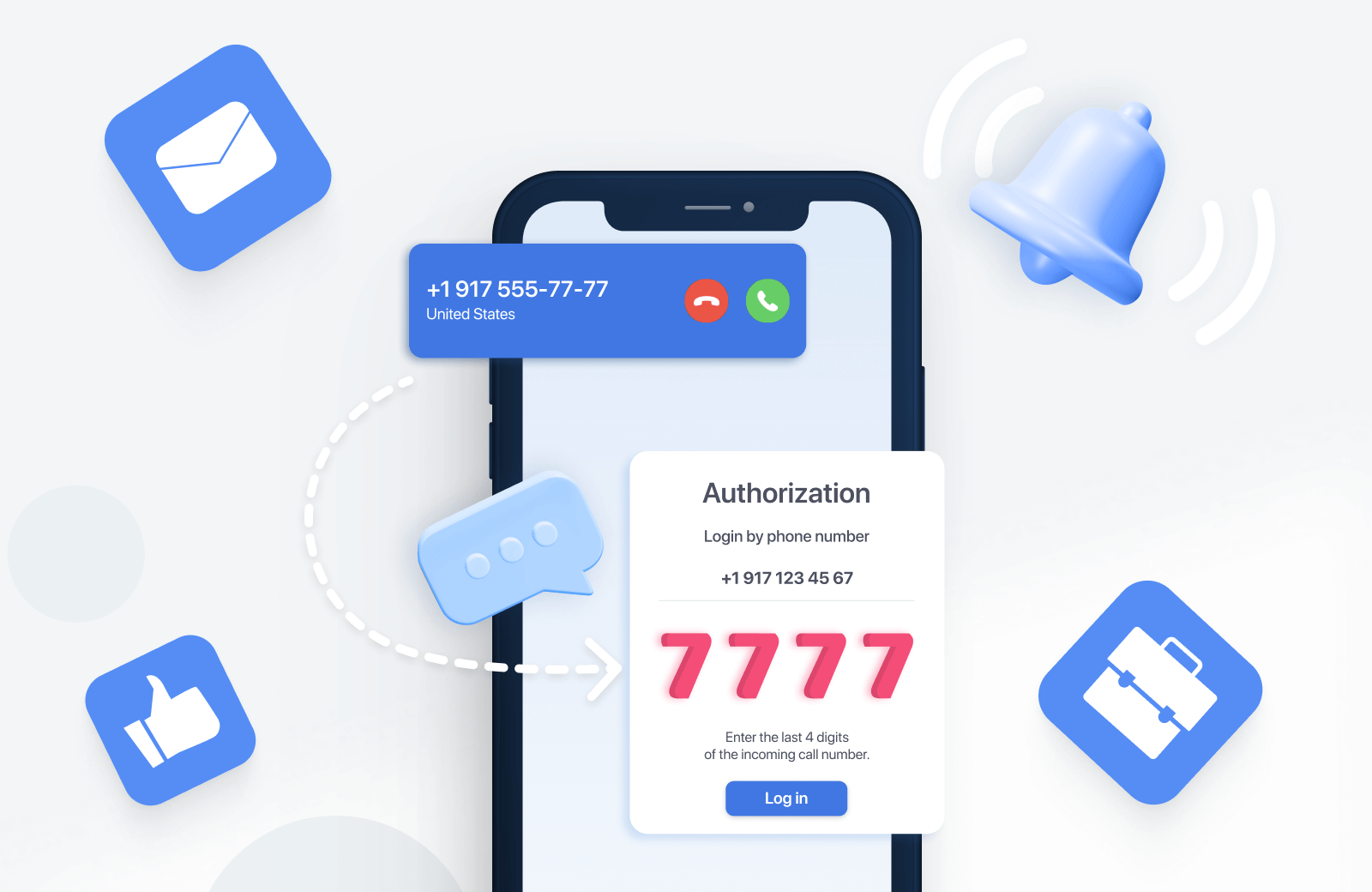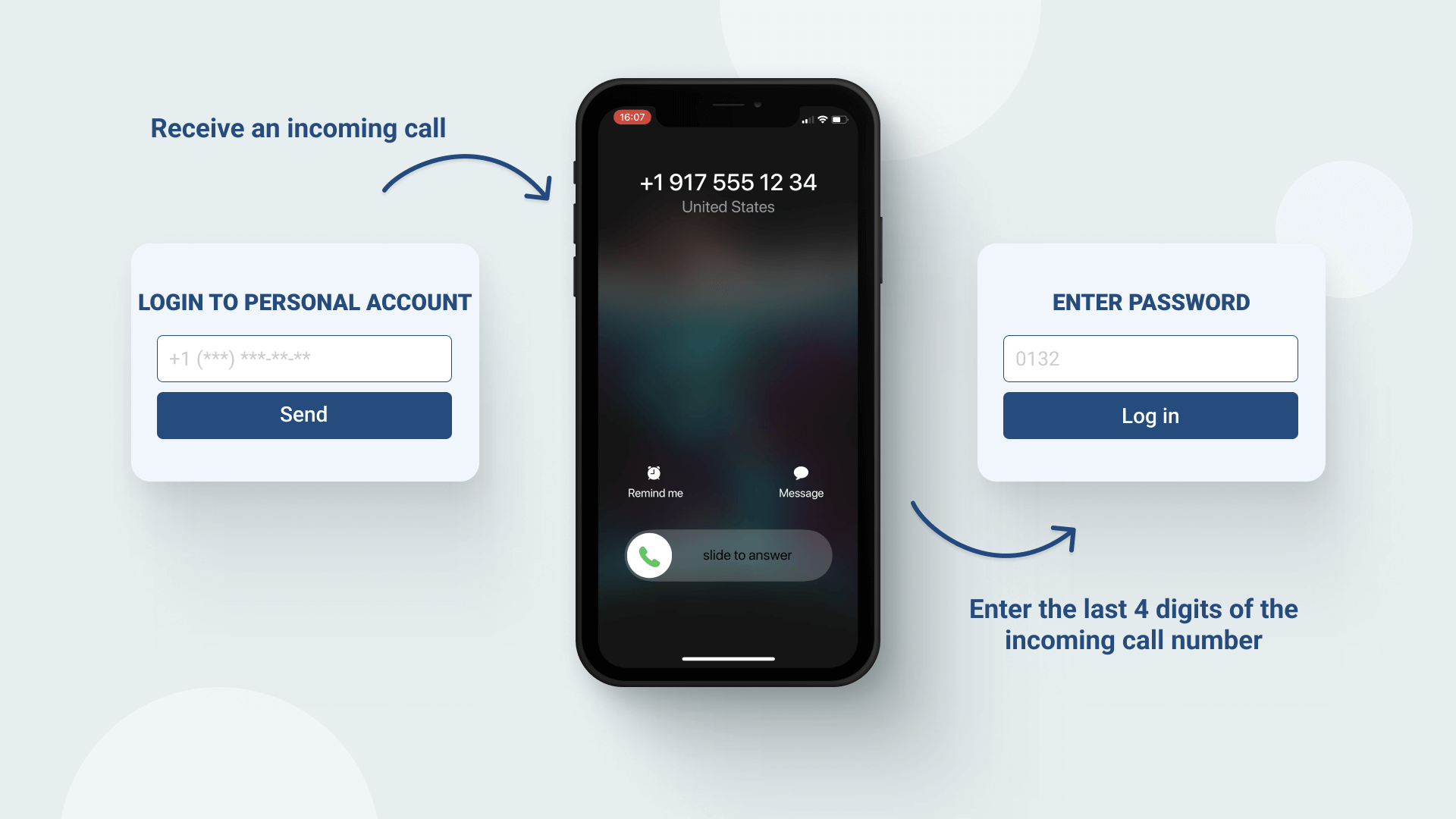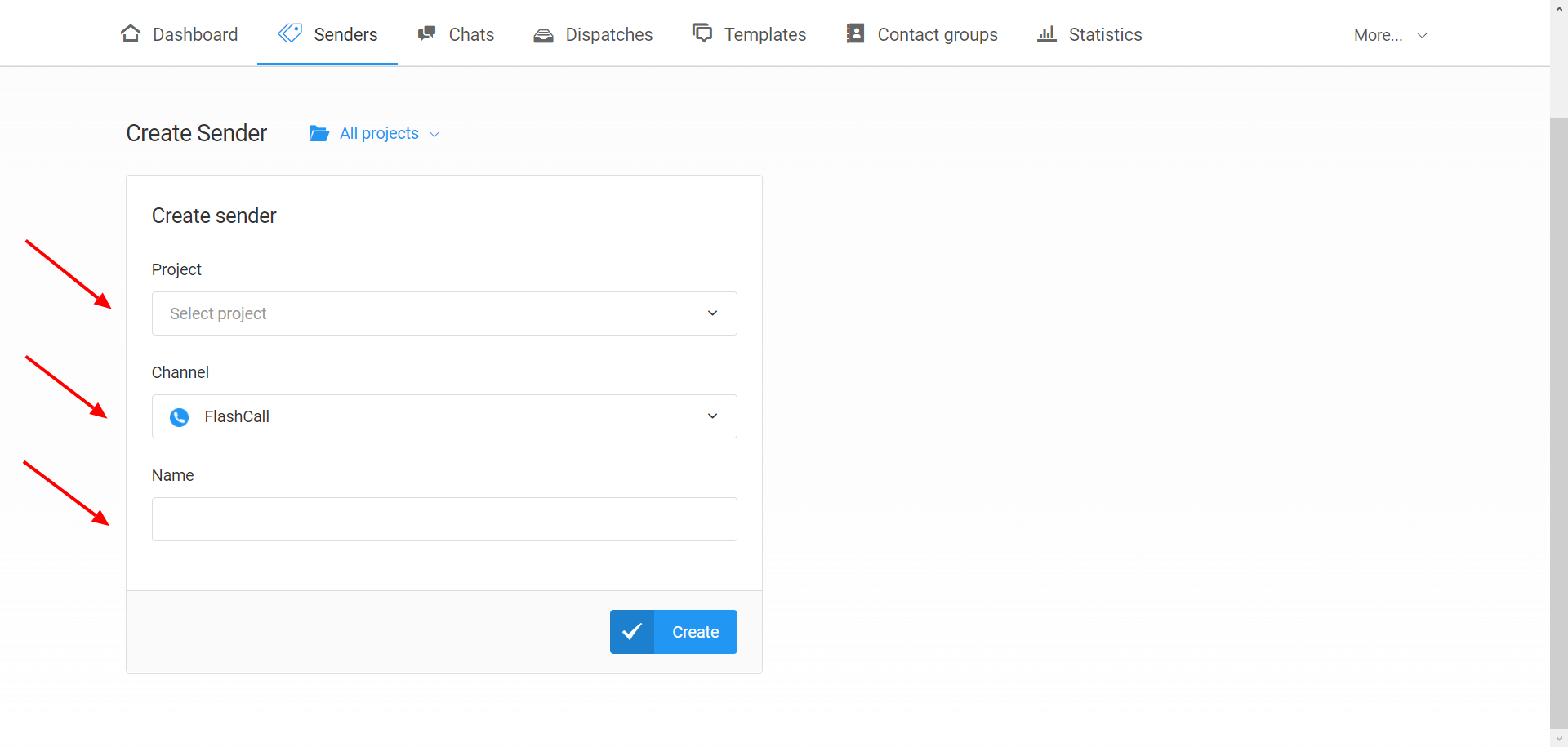Table of content:
Single-factor authentication (SFA) is a fast way to confirm user actions on a website or app. The user enters their login and password, getting access to their account in a matter of seconds. The problem, however, is that 90% of passwords can be hacked in less than six hours. And 57% of the users who have ever been the victims of fishing, stay unaware of that fact, never changing the compromised passport and reusing it for other accounts,
Alas, you probably have quite a few people like that in your user base. To prevent their data from leaking and accounts from hacking, two-factor authentication is needed. Today we look at Flash Call — one of the most convenient types of 2FA.
What is Flash Call verification?
Flash Call is a way to verify a user through a One-Time Password (OTP). OTP is a unique and safe PIN code valid for one configuration/login session. With Flash Call, the system places an incoming call on the number provided by the user. The call is silent and comes from a number that has OTP in it. The user enters the code, thus verifying their action and getting access to the account or a certain service.
Flash Call verification technology utilizes the following process:
- When attempting to sign up or log in to the site or app the user enters a phone number. The number is transmitted through API to the Flash Call system.
- Flash Call generates an OTP (usually 4-6 digits) and passes it to the backend through AIP
- At the same exact time, Flash Call calls the user from a number with OTP digits embedded at the end. The call is silent.
- The user completes the authentication process by entering those digits (usually 4-6 digits at the end of the number). If they match, the system verifies the users.
Flash Call Advantages
There are several ways to complete a 2FA of this kind. For instance, you can get OTP via SMS or email. But the Flash Call approach has several advantages, including:
- Low costs for businesses. On average, a Flash Call for business costs 8 times less than an SMS with a code. Moreover, if the text message gets delayed due to the phone’s mobile carrier problems, the user will have to repeat the verification process. Which leads to extra business expenses and the possible loss of customer loyalty.
*Prices depend on the service provider.
- Availability & non-intrusive mechanics. If the user’s phone got a service, Flash Call will reach them anywhere around the world. It’s a silent call that immediately gets dropped by the system yet remains in the phone’s history as a missed call. The user doesn’t have to answer it or try to memorize the OTP as it is read by a voice bot. A missed call from a voice bot means the user will have to make another login attempt, which doesn’t happen with Flash Call. The user doesn’t get distracted or stressed from interacting with an unknown number.Not to mention that voice bot authentications can’t go through if the user’s service isn’t active or in roaming. For Flash Call, this isn’t an obstacle.
- Speed. Flash Call needs only 5-10 seconds to generate an OTP and place the call. It verifies the entered code in a couple of seconds right after. Meanwhile, SMS or emails containing the OTP sometimes take minutes to arrive. Sometimes they don’t go through at all, being discarded by anti-spam.
- Safety. Responsible providers of the Flash Call verification service use large pools of reputable phone numbers. Spam and robocall blockers will greenlight them.
- Fast API integration. Only a few lines of code are required.
Who will benefit from verifying clients through Flash Call?
According to the research conducted by Juniper, the market of Flash Call verification is expected to grow by 185%, considerably sidelining alternative SMS-based options. This isn’t surprising: an incoming call 2FA makes life easier for all kinds of businesses. Here are just some of the Flash Call integration scenarios.
- Registration, authorization, or account recovery on websites and apps. Relevant for any industry, from gambling to banking. Users usually waste a lot of time on entering passwords, forgetting, and restoring access. Flash Call makes a way better verification method. Clients simply enter the last few digits of the incoming phone number and start interacting with the service, hassle-free.
- Offline verification ‘on the spot’. Let’s say, a cashier needs to activate a customer loyalty program, a personal discount, or a coupon for a client right at the register. A 2FA is required to prevent possible fraud; the client provides their phone number. The cashier puts it in the system and immediately verifies the client through a Flash Call OTP that arrives on the client’s phone.
- Online payments. To make a payment process safe for both the client and the company, transaction verification is required. Flash Call allows clients to verify their payments in a couple of seconds, preventing conversion loss at the final stage of your sales funnel.
- Booking or order confirmations. Flash Call authentication is convenient for beauty studios and clinics. There’ll be no need to call every client personally to confirm their beautician or dentist bookings. Use Flash Call instead, right after the customer makes a website appointment. That way you will weed out the bots and make sure the bookings are from real people.
- Connecting to public WiFi. Free WiFi is a must for any quality service. Flash Call is a great tool for businesses that want to offer a safe connection: entering a one-time password is much more convenient than bothering the manager about the code.
How to set up Flash Call verification
To utilize Flash Call for client verification, use a service provider. Messaggio, a multichannel communication platform, offers a comprehensive and user-friendly interface for the Flash Call integration. The algorithm is as follows:
- Register at the Messaggio platform.
- Sign the online offer.
- Through your personal Messaggio dashboard, create a Sender ID that will place outbound calls on user phones (phone numbers will be unique for each verification).
- Copy the Project Secret key and the Sender code for API from your account and paste them into your system.
- Monitor and analyze the successfully delivered Flash Call stats through a Messaggio dashboard.
See a more detailed guide on setting up the Flash Call service in the Messaggio Knowledge Base.
Businesses benefit from Flash Call in terms of expenses, maintenance, continuity, safety, and positive customer experience. Create your Messaggio dashboard right now and make customer engagement even more comfortable for both parties.
Do you want to enable user verification via Flash Call?
Tell us about your task and we will offer a suitable solution.






